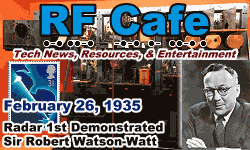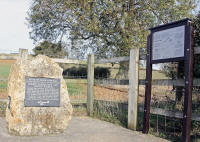|
   February 26 February 26
1829: Blue jeans inventor
Levi Strauss
was born. 1866: American industrialist Herbert Dow, founder of
Dow Chemical
Company, was born. 1852: American physician
John Kellogg,
who invented the corn flake and founded a company bearing his name, was born. 1896:
Henri Becquerel unintentionally discovered radioactivity from
uranium caused by the element having sat upon a photographic plate in his desk drawer.
1903: Richard Gatling, inventor of the Gatling machine gun, died. 1933:
A ground-breaking ceremony was held at
Crissy
Field for the Golden Gate Bridge. 1935: Radar (RAdio Detection And Ranging)
was first demonstrated by
Sir Robert Watson-Watt of England. 1966: The first
Saturn 1B rocket was launched from Cape Canaveral, FL, on an unmanned
suborbital test flight. 1970: National Public Radio (NPR) was founded. 1991: Iraqi troops fled
Kuwait City.
1993: Muslim terrorists exploded a bomb in the parking garage of the
World Trade Center, killing six people and injuring more than
1,000 others. 2023: Morris
Tanenbaum, inventor of the silicon microchip, died.
| Jan
| Feb | Mar |
Apr | May |
Jun | Jul |
Aug | Sep |
Oct | Nov |
Dec |
Note: These
historical tidbits have been collected from various sources, mostly on the Internet.
As detailed in
this article, there
is a lot of wrong information that is repeated hundreds of times because most websites
do not validate with authoritative sources. On RF Cafe, events with
hyperlinks have been verified. Many years ago,
I began commemorating the birthdays of notable people and events with
special RF Cafe logos.
Where available, I like to use images from postage stamps from the country where
the person or event occurred. Images used in the logos are often from open source
websites like Wikipedia, and are specifically credited with a hyperlink back to
the source where possible.
Fair Use laws permit
small samples of copyrighted content.
|











